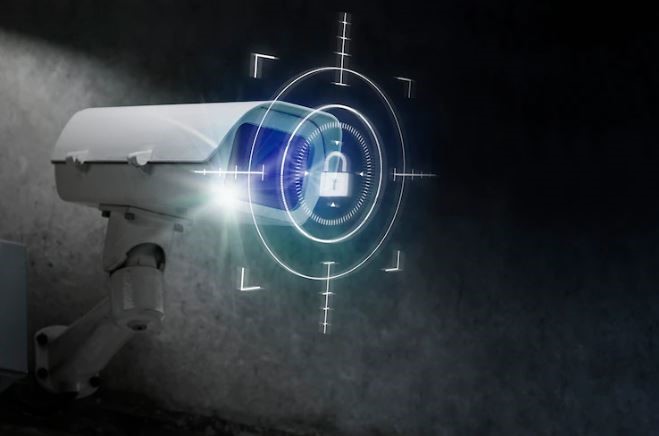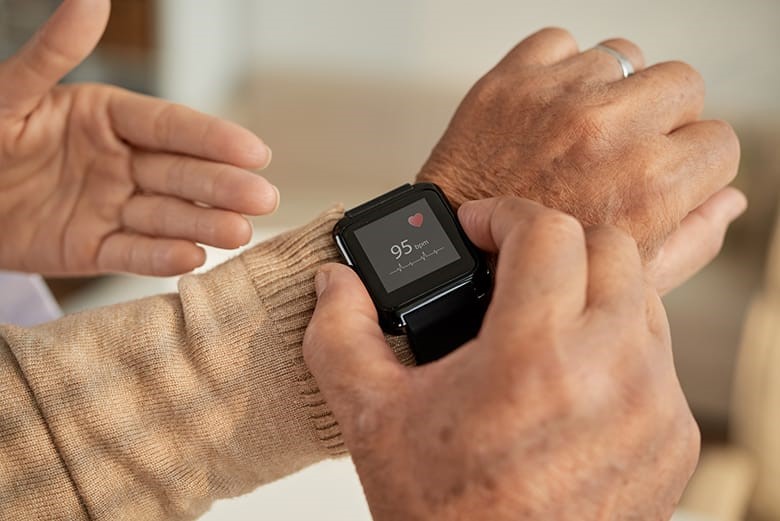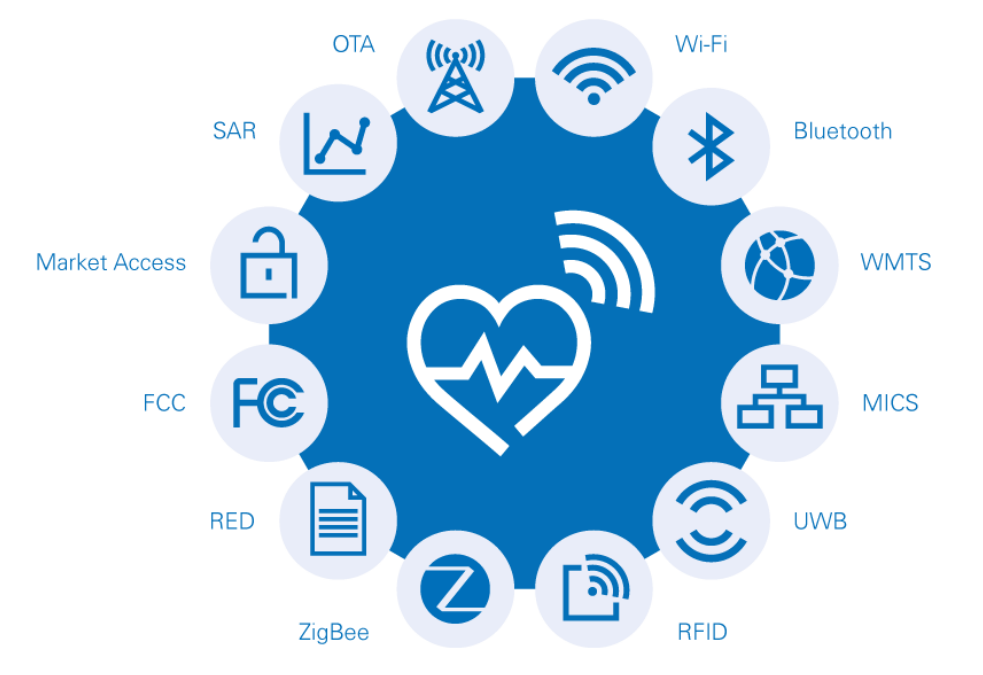Smart Health
Smart health makes medical care more intelligent!
Smart health, a bridge to the modern medical world
New technologies have created new dimensions in the care of patients, through smart health systems and quick access to their health data. Smart health systems are capable to receive medical information from sensors, storing and processing them automatically. This data is a gold mine for the beneficiaries of health care to improve health and patient experiences and at the same time create favorable income opportunities.
The concept of smart health
As mentioned above, many parts of our daily lives are affected by smart technologies. The health care system is not an exception to this rule and we see the benefits of using information and communication technology to improve the quality of health care and the health of society. According to Blue Stream consultants, "smart health refers to technologies that use more efficient diagnostic tools to provide more effective treatment for patients and thus improve the health level of society." Electronic health care not only means the adoption of new products and technologies for diagnosis and treatment but also includes more information exchange between doctors and patients during the treatment process and ultimately better management of clinical data.
The key concept of smart health includes electronic health services, mobile medical services, electronic file management, and smart medical devices.
- Smart operating rooms, a revolution in the field of surgery and health
By making operating rooms in hospitals smarter, you can benefit from its unique advantages:
- Monitoring of medical devices and equipment in the operating room
- Intelligent control of environmental conditions (temperature, pressure, humidity, amount of radiation, etc.)
- Elimination of the risk of surgical instruments remaining in the patient's body by using smart tables in the operating room
- Intelligent management of the patient's conditions in the operating room and collaboration to make appropriate decisions with the patient's vital signs
- Smartening the patient’s room by using the Internet of Things (IoT)
Among the most important benefits of smartening the patient room in hospitals, the following can be mentioned:
- The possibility of seeing and monitoring environmental conditions by the patient himself (light, temperature, etc.)
- The possibility of automatic alarms for patients' food and drug plan when taking food and medicine
- The possibility of watching TV, using medical educational programs and online medical journals
- The possibility of notifying the patient's condition remotely to the nursing station through the touch screen in the patient's room
- Smart pharmacy and facilitating drug preparation and delivery processes
A smart pharmacy, along with making it possible to carry out the internal processes of the pharmacy, including registration of prescriptions, calculations, and fund management, also provides the possibility of managing the pharmacy's inventory and ordering medicine to drug distribution companies. The smartness of pharmacies is based on their current and future needs and has unique features that, in addition to receiving an electronic prescription from the smart doctor's office and managing medicine data in the form of a smart drug file, also provide the ability to securely transfer this information on different platforms such as the web and smartphone apps.
- Information security and privacy of patients in medical centers
With the significant expansion of using the Internet of Things (IoT) in the field of health and healthcare, one of the most important issues that arise is the safe transfer of information from patients to medical centers. This means that no person or other persons except the sender and receiver should have access to the information sent by the patient. This is how the patient ensures that his information will not be disclosed.
- Intelligent monitoring of children's health and safety using the Internet of Things (IoT)
Internet of Things (IoT) technologies implemented to monitor people's health can also benefit children, especially very young children. The perfect example is the Teddy Gardin doll; A smart doll that can check the child's heart rate, temperature, and oxygen saturation just by hugging it. This feature can help parents quickly identify any signs of trouble.
The Internet of Things (IoT) also plays a significant role in ensuring the safety of children. For example, a fall can cause serious injuries to children, and if not acted on in time, it can create more serious threats. Smart wristbands can detect a possible fall by scanning micro-vibrations and detecting changes in a person's height. Parents can also track their children's location at all times. Sometimes, children may get lost while playing. But with the use of Internet of Things (IoT) wearables, it is possible for parents to determine the exact location of their child. In this way, children have more freedom to move while playing, and on the other hand, it gives parents peace of mind.
- The Internet of Things can facilitate the independent life of the elderly
Smart motion sensors make it easier for caregivers to keep the elderly safe. If they go to the bathroom, if they go to the kitchen, if they use the stove, and even when they leave the house, their caregivers can remotely monitor their daily activity. Wearable wristbands also provide measurement and monitoring of various vital sign values. For example, smart health bracelets can remotely control blood pressure and heart conditions, blood sugar, body temperature, the daily calorie intake of a sick elderly person, sleep time, and other things.
On the other hand, almost all elderly people use different medicines for diseases related to old age. These drugs can be very vital for them. But, due to old age, it is sometimes difficult to remember to take their medicines. With smart medical Internet of Things (IoHT) products, it is possible to remind the elderly when to take medicine.
Why do we need a smart health system?
Before the advent of the Internet of Things (IoT), patients' interaction with doctors was done only through face-to-face meetings and telephone communication. In other words, there was no other way for doctors, hospitals, and other medical centers to continuously check the health of patients and provide the necessary recommendations based on that.
Devices equipped with the Internet of Things (IoT) have enabled remote monitoring in the field of health. It also provides the potential to improve the treatment experience of patients and empower doctors to provide more effective treatment services. In addition, remote monitoring of the patient's health helps to reduce the duration of the person's stay in the hospital, prevent re-admission and significantly reduce their mortality rate. The Internet of Things (IoT) also has a major impact on significantly reducing treatment costs and improving treatment outcomes.
The benefits of using smart health systems
The Internet of Things (IoT) will undoubtedly revolutionize this industry by redefining the space of devices and the interaction of people in providing the best healthcare solutions. The use of smart health systems not only in the field of treatment, but also in the entire length of the health value chain, both in the field of wellness and prevention and in the field of monitoring, monitors health indicators and, if needed, the system itself intelligently will announce the necessary warnings. The smart health system also has applications in health care that benefit patients, families, doctors, hospitals, medical centers, pharmacies, and insurance companies.
In the smart health sector, the following benefits include people's health:
- Reduction of waiting time in medical centers
Thanks to some advances made in the field of health, treatment, and health, such as the use of the Internet of Things (IoT) in smart health systems, the waiting time in offices and hospitals for patients and doctors has been reduced even by 50%. In addition to this, the efficiency of the whole treatment process is improved and the selection of doctors and treatment centers, appointment booking, and follow-up sessions are also facilitated.
- Constructive interaction between medical service providers
Sometimes, due to the constant back and forth between doctors, imaging centers, and medical diagnosis laboratories, the process of diagnosis and treatment is very long. Using smart health equipment for doctors makes this cycle easier and helps people interact better. Therefore, timely and informed decision-making is possible.
- Archiving of medical records
Maintaining the patient's medical records is a basic requirement for most doctors, hospitals, and medical centers. The smart health system provides the possibility of recording examinations, diagnoses, treatment regimens, and drugs. In addition to this, the collection and archiving of medical records of people in this system make it possible for doctors to quickly make the right decision in the continuation of their treatment process by reviewing their patients' records in case of any problem in the treatment process.
- Remote interaction between patients and doctors
Video calls, electronic prescriptions, and remote monitoring of medication use are among the things that are provided thanks to the use of the Internet of Things (IoT) and smart health systems in the field of healthcare. Smart health can also draw information on the patient's vital signs to inform doctors and nurses in emergency cases. Therefore, patients can access the best medical services from a distance regardless of their geographical location.
- Follow-up of staff, patients, and equipment
Security is one of the most important concerns of any hospital or medical center. Maintaining security is not possible without the ability to track assets such as employees, patients, equipment, etc. throughout the hospital or treatment center. It is easy to deal with such tasks in smaller medical centers, but in larger departments such as hospitals where there are many employees and patients, it is simply not possible to do such a task. Therefore, most hospitals and medical centers have turned to Internet of Things (IoT) systems in order to keep track of existing assets. This method is not only a low-cost way to track daily activities in the hospital, but it can also be more effective.

- Monitoring of chronic diseases
Nowadays, chronic diseases such as diabetes, cardiovascular problems, etc., which create special conditions for the patient, can be monitored with the help of smart health devices, and the concerns of these types of patients can be minimized. as much as possible. Such programs help patients, for example, manage their blood sugar levels, follow a proper diet, and do more to prevent the complications of their disease.

- Intelligent management of consumed drugs
One of the most interesting cases in the field of smart health systems and the Internet of Things (IoT) is the discussion of medicines management. This topic seems to be more like science fiction stories; But in this situation, the drug that includes microscopic sensors can send a signal to the external device that is usually on the patient's body and make sure that the dosage and application of the drug are correct. This information will be very valuable when it comes to remembering when to take medicine and prescribing the next medicine. Those patients who have access to such information can improve their personal performance through smartphone applications and improve their medication habits.
- Optimizing processes in hospitals
In addition to monitoring patients' health, Internet of Things (IoT) devices and smart health systems tagged with sensors are used to track the real-time location of medical equipment such as wheelchairs, defibrillators, nebulizers, oxygen pumps, and other monitoring equipment. The deployment of medical staff in different locations can also be analyzed in real-time.
- Serving health insurance companies
There are many opportunities for health insurers with smart devices connected to smart health systems. Insurance companies can use data collected through health monitoring devices for their policy and claims operations. This data enables them to identify the accuracy of the information provided. In addition, they create transparency between insurers and customers in the processes of underwriting, pricing, handling claims, and risk assessment.
Smart medical devices
Medical devices using wireless technology (IoT) have created a revolution in the field of health care. Smart devices such as wearables (bracelets, watches, etc.) can send important medical data to doctors in real-time from hospital beds, to patients' private homes, as well as mobile equipment used in emergency rooms and vehicles. they do Wireless devices connected to patients' bodies allow them to be continuously monitored and doctors to be informed about changes that may require necessary measures. Smart personal medical devices allow patients to monitor even their smallest movements and provide this information to doctors in the shortest possible time. Smart medical devices have strict regulations and must be tested and certified according to established requirements such as FCC in the US market and RED compliance for the EU market.
To ensure the electromagnetic compatibility, cyber security, and functional safety of smart devices used in the modern healthcare industry, experts perform many tests, including device performance and compatibility testing.

IoTSmile products in the field of smart health
- IoTSmile smart bracelet
Among the most useful tools available in the field of smart health are smart bracelets that can appear in the form of a small health monitor and accompany us at all times. The IoTSmile smart bracelet is able to track the daily activities of the body, and among its most important features, the following can be mentioned:
• Height Detection
• Checking sleep status
• Detection of speed
• Calculate the number of calories consumed
• Counting the steps taken
• Measurement of blood oxygen level
• Measurement of heart rate and breathing pattern
- IoTSmile smart scale
Beauty is not just about weight. Fat has three times the volume of muscle, and that is why sometimes people with a thinner bodies weigh more. The IoTSmile smart scale is capable of measuring the main fitness indicators by using metadata and being equipped with very high-precision sensors. These indicators include weight, BMI, body fat percentage, metabolism, muscle mass, water volume, subcutaneous fat, bone mass, body size, protein percentage, physical age, and fat-free mass. The IoTSmile smart scale also designs a program to improve your fitness by continuously analyzing the measured data and detecting the smallest changes in the size of each indicator.
To receive advice and prepare any of the products, you can contact us by calling the numbers announced on the site, sending an email, or registering a ticket. Our colleagues are ready to answer and guide you.
References:
- Wipro: what can IoT do for healthcare
- Ippocrateas: SMART HEALTHCARE AND TECHNOLOGIES IN THE HEALTHCARE SECTOR-January 20, 2020
- Ey: How do you know a hospital is smart-3 Dec 2020
- I thought: Elderly HealthCare with the Internet of Things
- Dl.acm: A framework for privacy-preservation of IoT healthcare data using Federated Learning and blockchain technology-Apr 2022
- Dataconomy: The IoT for Kids: How Technology Affects Our Children-February 15, 2016
- Intelligent product: IoT and Senior Care: How Technology is Changing Senior Care
foundNothing
foundNothing

